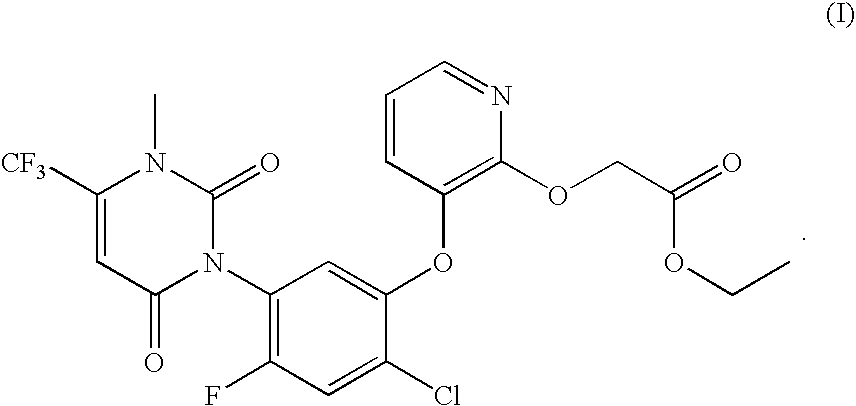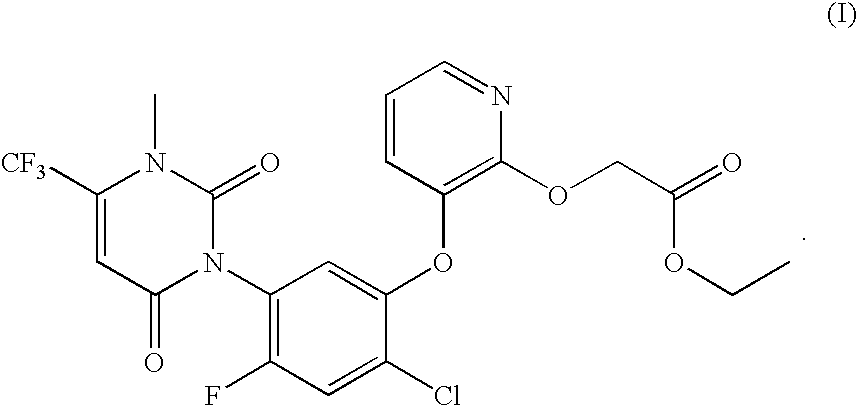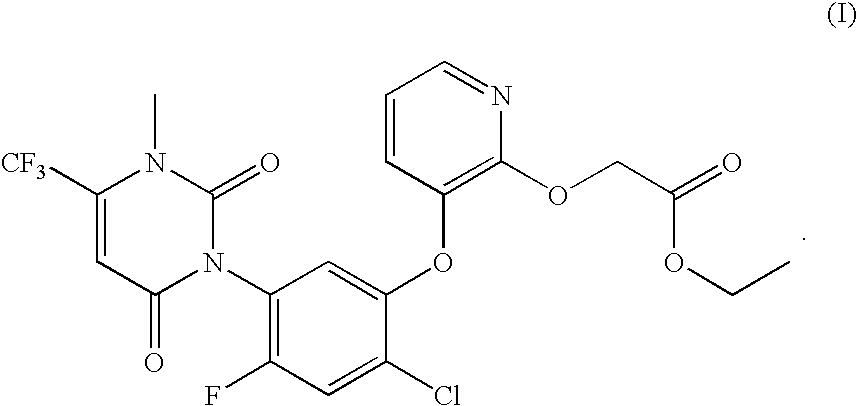Pickering emulsion formulations
a technology of emulsion and pickering, which is applied in the direction of application, biocide, heterocyclic compound active ingredients, etc., can solve the problems of droplet coalescence, formulation types can suffer, and the use efficiency of aqueous systems with certain crop protection agents is restricted
- Summary
- Abstract
- Description
- Claims
- Application Information
AI Technical Summary
Benefits of technology
Problems solved by technology
Method used
Image
Examples
example 1
[0134]Pickering emulsion compositions A and B as shown above in Table 1 were prepared, these being identical except that the oil phase in composition B contains Isopar™ V at a level of 3 wt % as a percentage of the oil phase. The samples were prepared as follows: benoxacor was dissolved in S-metolachlor under agitation at about 60° C., Aerosil® 200 hydrophilic fumed silica was dispersed in tap water under high shear using a rotor-stator Turrax® mixer, the oil phase was then added to the aqueous phase and mixed at high shear again until the target droplet size was obtained. Initially composition A had a median droplet diameter (D(V,0.5)) of 6.5 microns and composition B had a mean diameter of 4.6 microns. After 4 weeks storage at 38° C., composition A had a median diameter of 8.5 microns whereas composition B had a median diameter of 5.0 microns—the increase of 0.4 microns is insignificant within the experimental method. These results show that the addition of Isopar™ V at the level ...
example 2
[0135]Pickering emulsion compositions C and D as shown above in Table 1 were prepared, these being substantially identical except that the oil phase in composition D contains Styron® 666D polystyrene at a level of 5 wt % as a percentage of the oil phase. The samples were prepared as follows: where necessary Styron® 666D was dissolved in S-metolachlor under agitation at about 60° C., Aerosil® 300 hydrophilic fumed silica was dispersed in tap water under gentle agitation, the oil phase was then added to the aqueous phase, this composition was then mixed under high shear using a rotor-stator Turrax® mixer for 1 to 2 minutes during which period the Aerosil® R974 hydrophobic fumed silica was added and shear was continued until the target droplet size was obtained. Initially composition C had a 95 percentile droplet diameter (D(V,0.95)) of 43.2 microns and composition D had a 95 percentile diameter of 45.0 microns. After 3 weeks storage at 50° C., composition C had a 95 percentile diamete...
example 3
[0136]Pickering emulsion composition E as shown above in Table 1 was prepared as follows: Isopar™ V was mixed with S-metolachlor under gentle agitation, Aerosil® OX-50 hydrophilic fumed silica was dispersed in the solution of potassium glyphosate and half of the water under high shear using a rotor-stator Turrax®, the oil phase was then added to the aqueous phase and mixed at high shear again until the target droplet size was obtained, the remaining formulation components were then added and mixed until homogeneous. After 2 weeks storage under daily temperature cycling between −10° C. and 50° C., and also after 3 months storage at 38° C., the formulation shows only a trace (<1%) of clear serum formation, an unchanged homogeneous appearance, and remains a free-flowing liquid. These results show that these Pickering emulsions are stable in the presence of high electrolyte concentration, i.e., the glyphosate solution present in the aqueous phase, and have properties suitable for commer...
PUM
| Property | Measurement | Unit |
|---|---|---|
| freezing point | aaaaa | aaaaa |
| freezing point | aaaaa | aaaaa |
| solubility | aaaaa | aaaaa |
Abstract
Description
Claims
Application Information
 Login to View More
Login to View More - R&D
- Intellectual Property
- Life Sciences
- Materials
- Tech Scout
- Unparalleled Data Quality
- Higher Quality Content
- 60% Fewer Hallucinations
Browse by: Latest US Patents, China's latest patents, Technical Efficacy Thesaurus, Application Domain, Technology Topic, Popular Technical Reports.
© 2025 PatSnap. All rights reserved.Legal|Privacy policy|Modern Slavery Act Transparency Statement|Sitemap|About US| Contact US: help@patsnap.com



